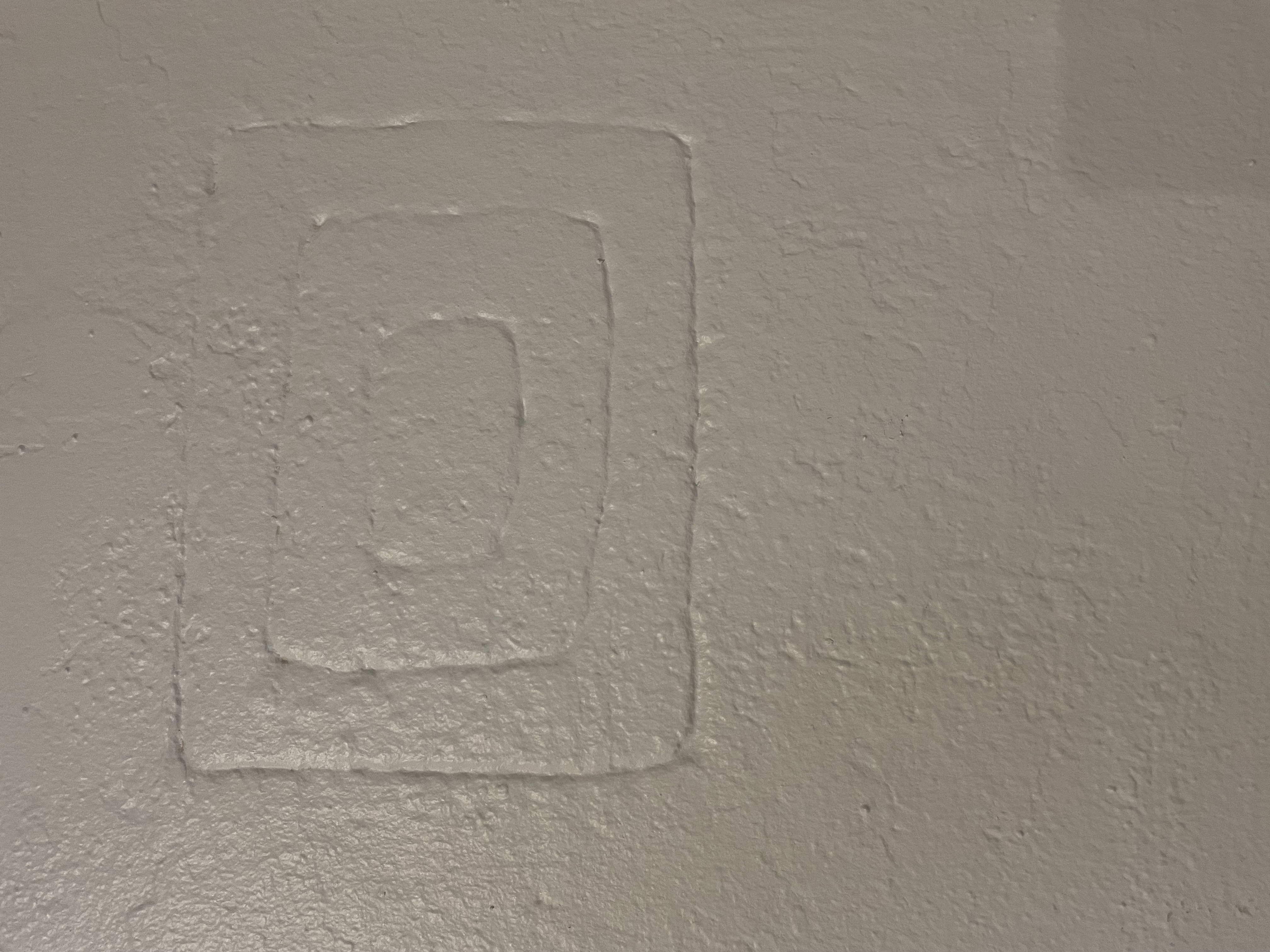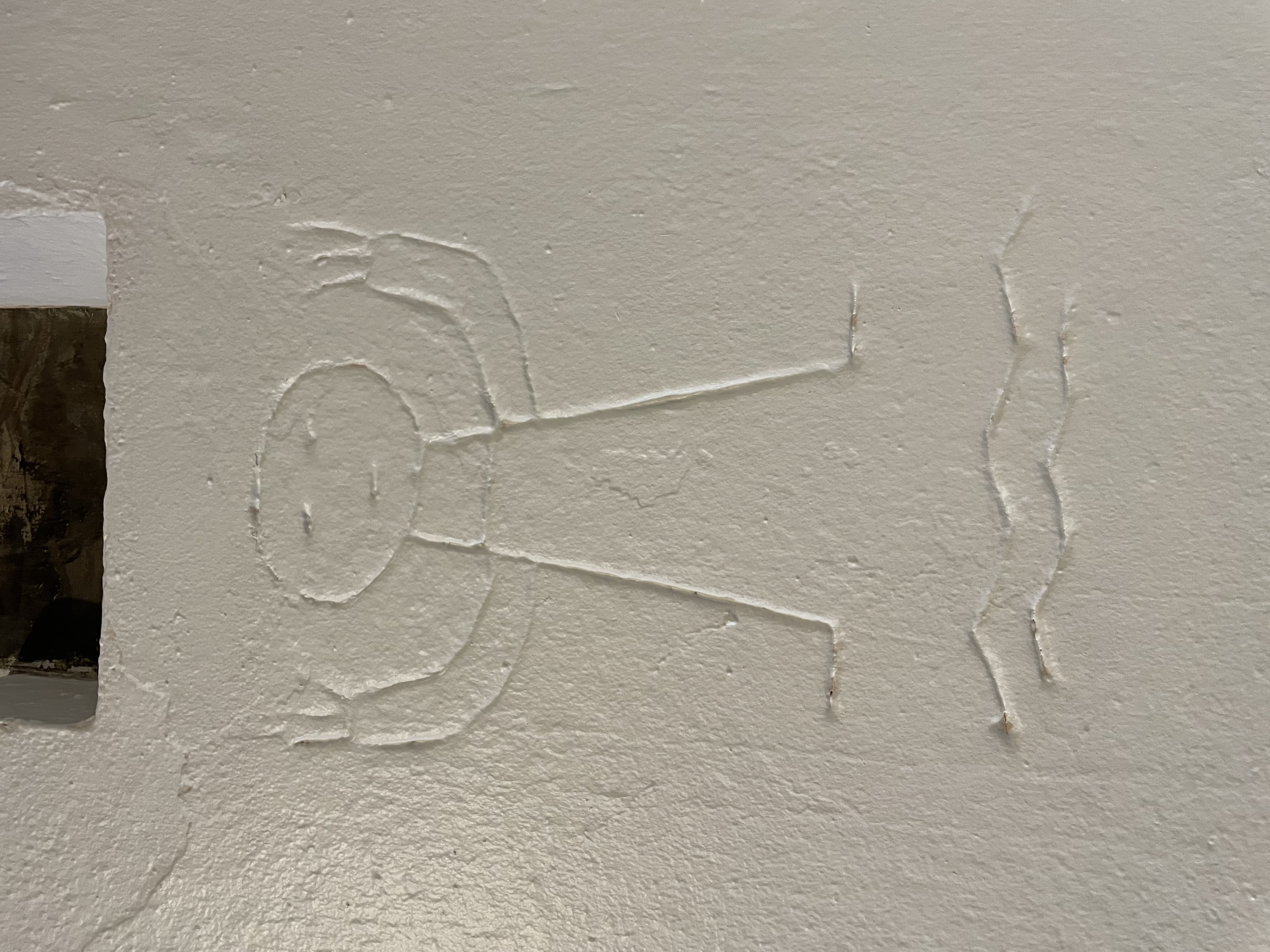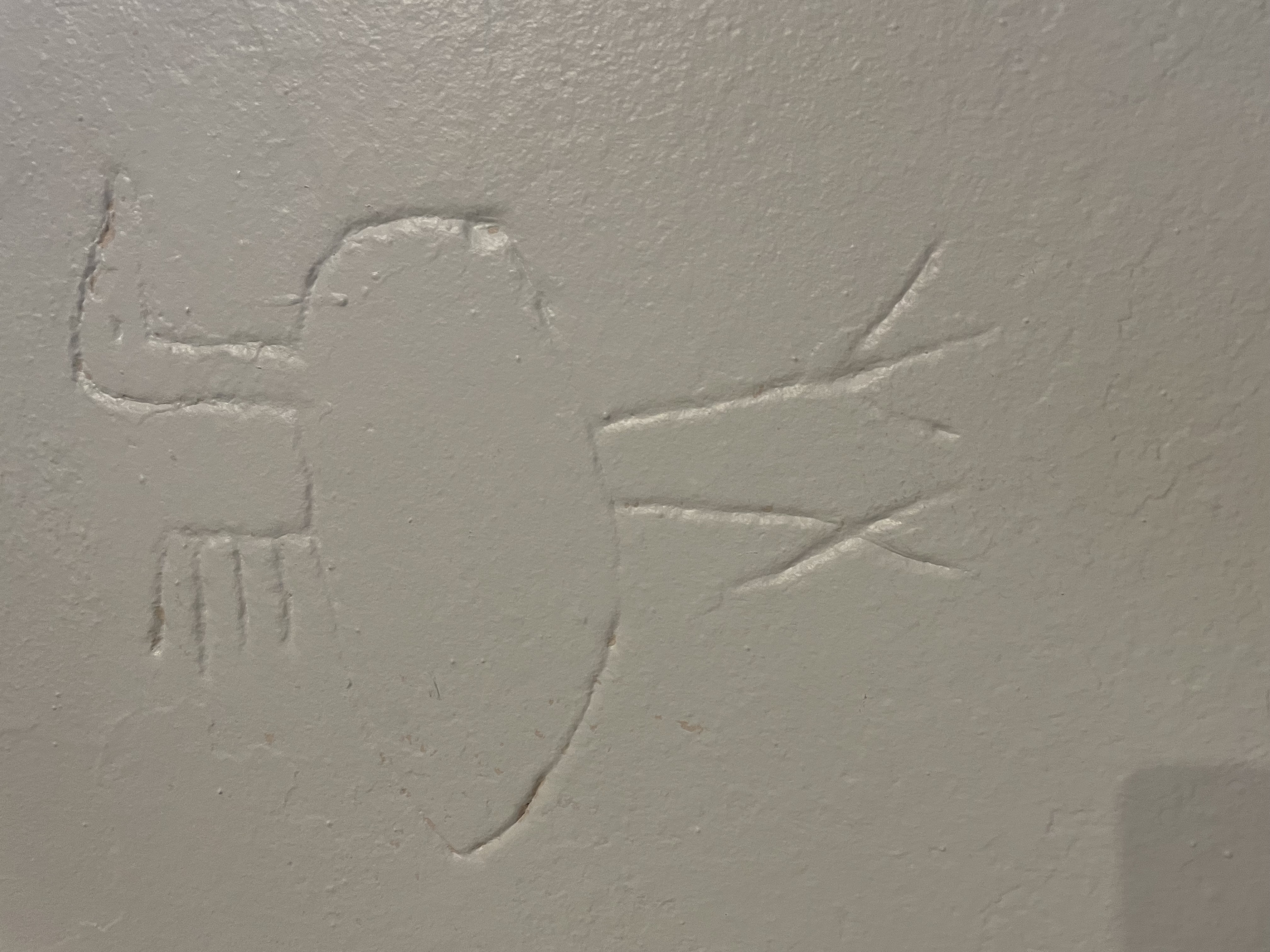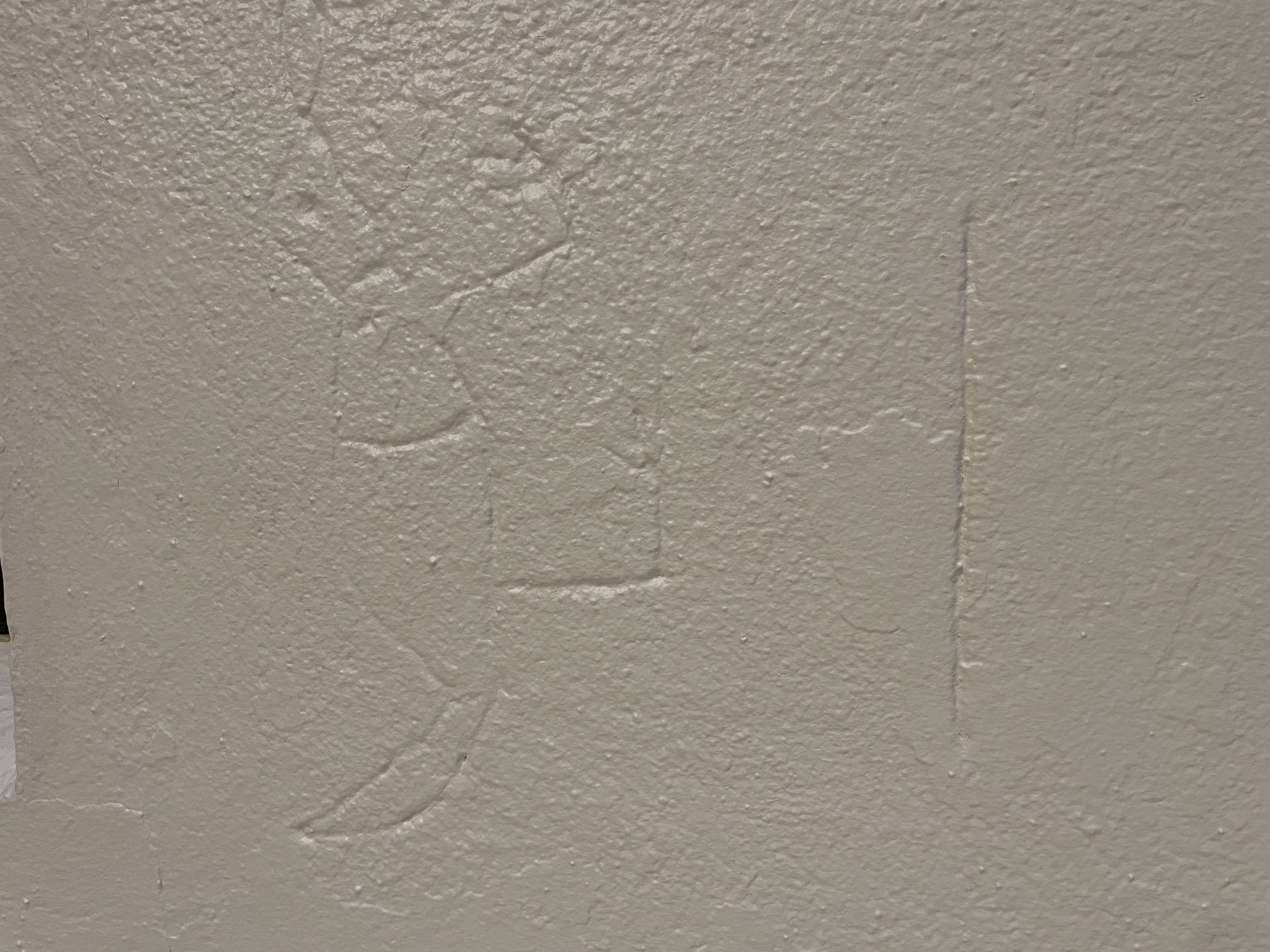A
Study Guide - Through the Palace of the
Governors In Santa Fe, New Mexico
- A Vital Part of New Mexico History
Compiled
by:
Ken
Bower, Ed.D., Volunteer Docent
Following Governor Juan De
Onate’s short-lived (1598-1610) and failed settlement of San Gabriel del Yunque at Ohkay Owingeh (formerly San Juan Pueblo), the Spanish crown
authorized a new governor, Pedro de Peralta, to establish the first villa and capital of what is now Santa Fe.
In 1610, Peralta began
construction of the casas reales, or royal
houses, which included the buildings for the cabildo (civil
administration) and the casa del gobierno (governor’s house) in response to the Royal Ordinance of the Indes of 1573. (King Phillip II, 1527-1598)
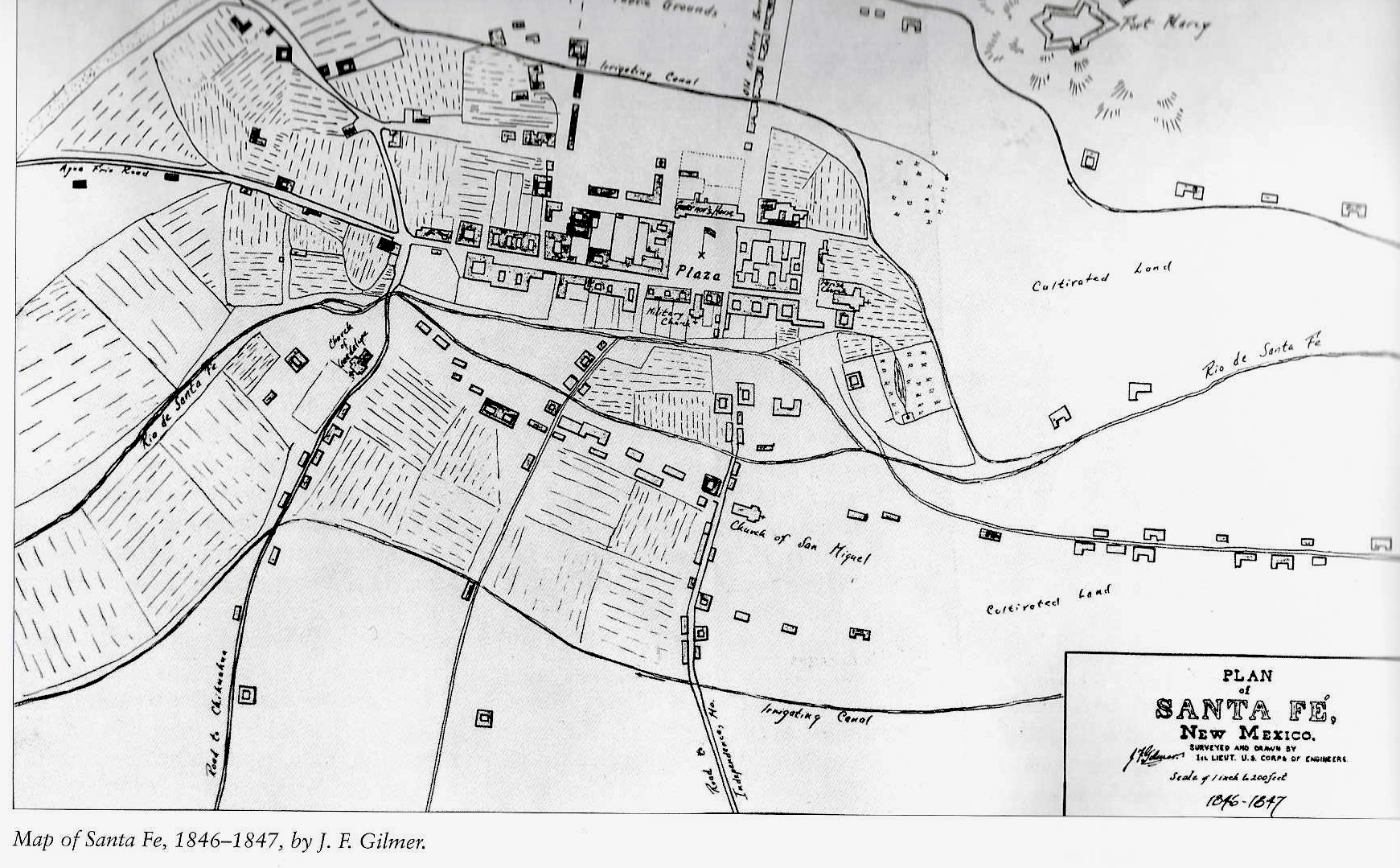
Santa Fe- history of an ancient city, ed., David Grant Noble, 2008,
School of Advanced Research Press, p.74.
The alcade (mayor) and regidores (aldermen) parceled out land on the north side of the river to its new citizens. The south side of the river became known as the Barrio de Analco. The Tlascalan Indian word, “Analco,” means “the other side of the river.” The Chapel of San Miguel there provided laborers, artisans, and Tlascalan Indian servants with a place to worship.
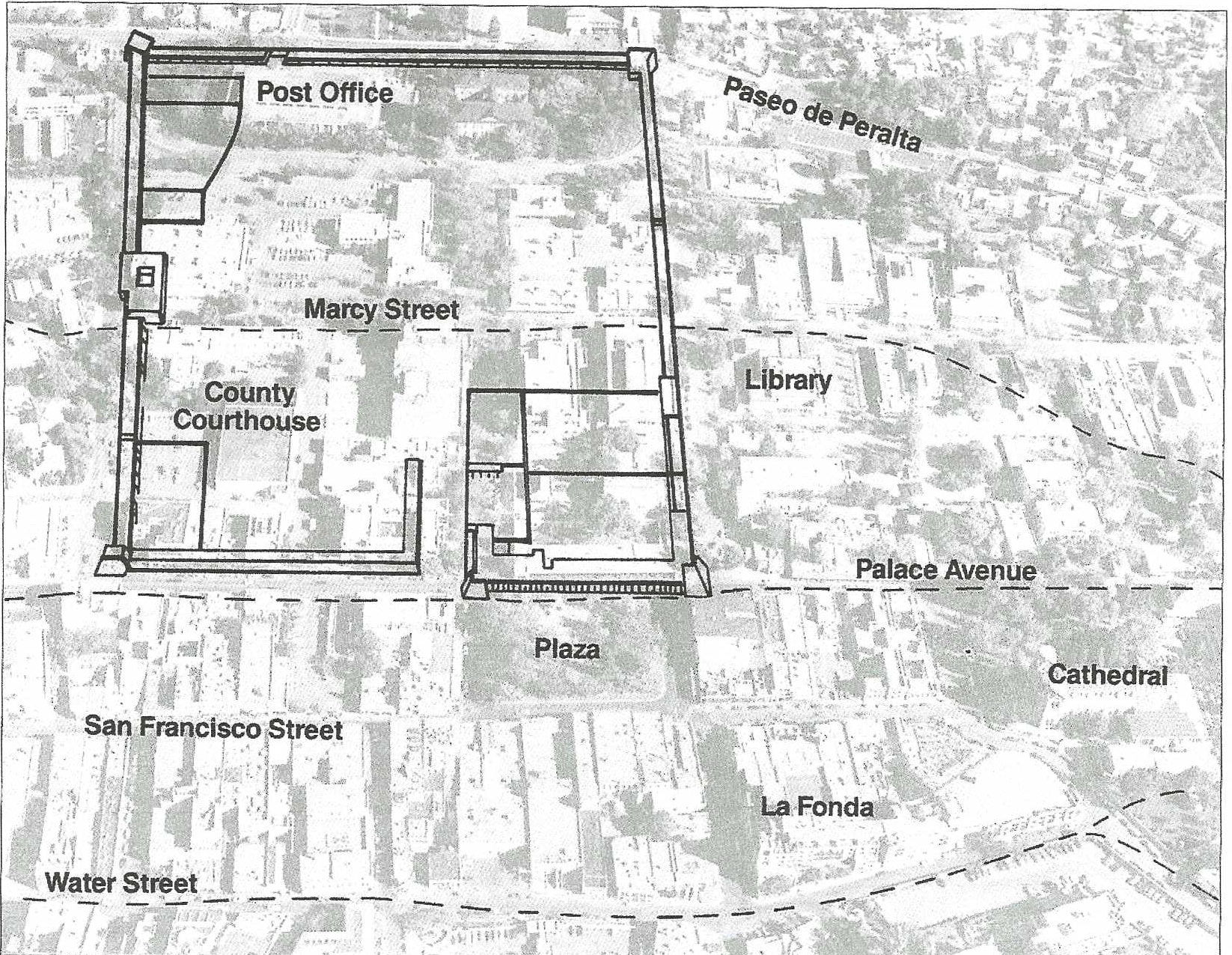
The Palace and Presidio (fortification) in late 1700’s (Marcy Street would have been in the center) Notice that the Presidio’s north wall extended to where Paseo de Peralta is today behind the Post Office) (Marcy Street would have been in the center!)
Santa Fe- history of an ancient city, ed. David Grant Noble, 2008, School of Advanced Research Press, p.116.
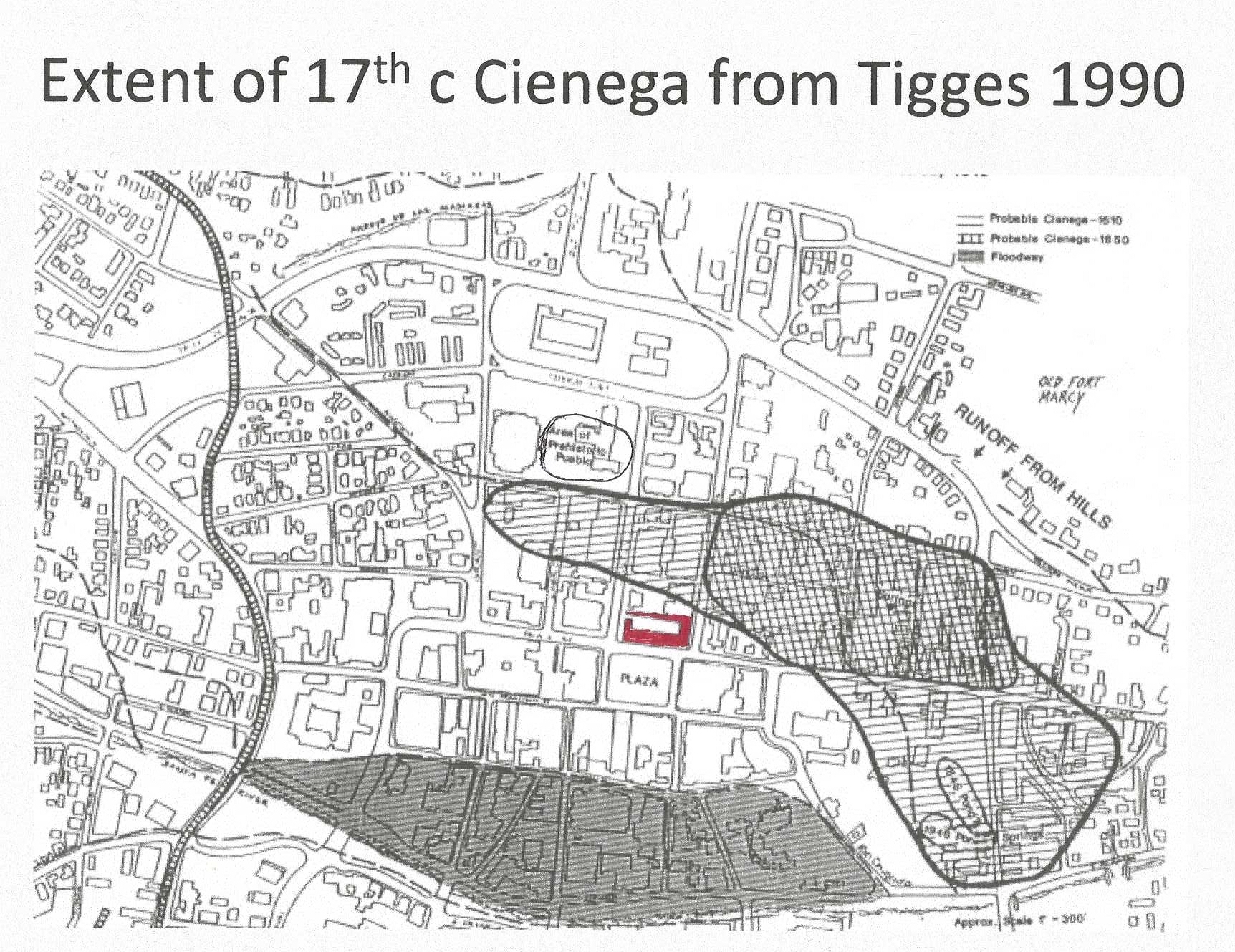
Santa Fe had plenty of water. The Santa Fe River and two cienegas that were under the city.

Illustration of the possible early Two-story Palace (illustration in the Palace of Governors western hallway)
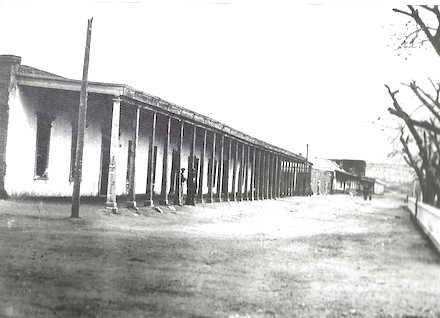
1868 Style of the Palace - (Santa Fe history of an ancient city, ed. David Grant Noble, 2008, p.109)

Spanish-Pueblo Revival Style (photo by Ken Bower)
The palace changed many times throughout time. At one time it is thought to have had two stories, the front portal was changed from the territorial style to the Spanish-Pueblo Revival syle, which incorporated vigas, latillas, corbels, columns and canales.
About the Palace
- Construction on the Palace began in 1610. The walls were originally made of adobe. Later wall construction has included brick and wood frame.
- The building has changed over the centuries in response to functional needs, aesthetic interests and access to new technology.
- The Palace has been in continuous use for more than four hundred years and is considered to be the oldest, continuously occupied public building in the U.S.
- The building is called the ”Palace of Governors” because it was designated as the “royal house” during Spanish Colonial times for the office of Governor who represented the King of Spain.
- The building was used as a residence and office for the region’s chief administrator throughout the Spanish, Mexican and most of the American Territorial Period.
- Use of the Palace as the Governor’s residence ended in 1893. Legislative and executive functions were moved to the territorial capital in 1886.
(The National Historic Landmark Nomination is a good source of additional Information)
Major Times of Usage & Dates
Early Spanish - 1610-1680
Oldest public building in the U.S. - used as the residential and offices of the governors
Native Tewa Pueblo laborers were conscripted from surrounding villages to complete much of the early construction supervised by Juan Chamiso, a native of the Valley of Mexico.
The first governors were responsible to the Viceroy in Mexico who represented the King of Spain
Windows were small; dirt floors mixed with animal blood
Don Pedro de Peralta (2nd Governor) was appointed in 1609
Early in 1610 the layout of Santa Fe began following the Laws of the Indies Royal Ordinance of 1573 (King Phillip II)
* oblong plaza
* Palace of Governors (Santa Fe’s Casa Reales had a tower on both
ends)
* a church & colonists houses & fields
(All early records of this period were destroyed by the Pueblo Revolt in 1680)
The Pueblo Period – 1680 -1693
Began with the Pueblo Revolt of 1680 ending with Don Diego de Vargas’ reconquest
The revolt began on August 10, 1680 - On the morning of Aug. 13, the city was attacked from Analco by Tanos (from the Galisteo Basin-Galisteo, Cienega), Pecos and Querez of San Marcos
Antonio de Otermin was the governor
Santa Fe was abandoned to the Puebloans. The Spanish walked to El Paso del Rio del Norte (Matamoros, Mexico) leaving the city for 12 years
The Palace of Governors was converted into a pueblo consisting of four communal dwellings with rooms and entrenchments
built over the palace. It had four round towers, two plazas and dwellings three or four stories tall. Successive bands of
Adobe 15 to 20 inches high were constructed using a technique called puddling or puddled adobe.
“the Indians constructed a three-to four-story pueblo over the Palace which was occupied by some one thousand of their
number” (National Historic Landmark Nomination for the Palace of Governors, p.31.)
Late Spanish- 1693-1821
Reconquest of New Mexico by Don Diego de Vargas Zapata Lujan Ponce de Leon in 1693 with help of the Pecos Pueblo Indians. He brought 100 soldiers, 800 colonists, Indian allies, cattle, horses and mules.
Pedro Rodriquez Cubero succeeded Vargas as governor
*reconstructed the Casas Reales at his own expense
*reduced the size to about what it is today
In 1708 the Palace was to be torn down, but the project was abandoned
In 1744 repairs were made under Gov. Joachim Codallos y Rabol
In 1781, Gov. Juan Baustita de Anza unsuccessfully proposed to move the headquarters to the other side of the river
Plan of the Presidio, 1791
The Palace had a jail and guard towers at the west end; governor’s residence next to these toward the east; then the Supply Master’s office and a bastion at the east corner
In 1807, Zebulon Pike said that all of the floors were covered with skins of buffalo, bear and other animals
It was reported in 1810 the condition was deplorable.
Mexican – 1821-1848
Trade with the United States began when the Santa Fe Trail was opened with the trader William Becknell meeting don Pedro Ignacio Gallego the alcalde of Abiquiu at Kearney Gap close to present day Las Vegas (an interpreter in San Miguel de Vado spoke French and Spanish since neither side could speak the other’s language)
In 1836, the north side of the plaza contained the warehouse of the troops, the Palace of Governors, the Subcommissariat and custom house, the military quarters and the National jail
Manuel Armijo was governor from 1827 to 1844 then from 1845 to 1846 when Santa Fe was taken over by U.S.troops
Gov. Armijo met with Capt. Philip St George Cooke, twelve dragoons and the trader, James Magoffin who represented General Stephen Watts Kearny’s Army of the West during the Mexican-American War
The Palace was taken over by the American troops on August 18, 1846
American Territorial - 1848-1909
New Mexico unofficially became part of the U.S. on August 18, 1846 when General Stephen Watts Kearney entered Santa Fe
The Treaty of Guadalupe Hidalgo was signed on February 2, 1848 officially ending the Mexican-American War
In 1846, Charles Bent was appointed governor of the New Mexico Territory by Kearny. On December 23,1850, after Bent’s untimely death, James S. Calhoun was appointed as governor of the New Mexican Territory by President Millard Fillmore
On March 10, 1862 the Confederate Army took over the Palace (Gen. Henry Hopkins Sibley)
Early in 1866 part of the west end of the Palace was removed (Lincoln Street was opened)
Military and civil funds were kept in a special vault (U.S. Depository) in the room at the southwest end of the Palace
In 1867 much repair and remodeling took place:
*the Territorial Library was moved
*a stable was made into the Legislative Council Chamber
*room for the House of Representatives and Federal County was moved
In 1880 Governor Lew Wallace completed Ben-Hur: a Tale of the Christ in the Palace
The Palace in the Twentieth Century
- In 1907 the School of American Archaeology (SAA) was founded and the Palace became its headquarters.
- In 1909 the Palace was designated as the home for the newly established Museum of New Mexico which displayed many artifacts
- In 1909 and 1914 the buildings obtained its current appearance and layout.
- The architectural style of the Palace is Spanish-Pueblo Revival which includes thick adobe walls finished with earthen or light-colored plaster, heavy columns with carved corbels, ceilings with exposed vigas and latillas, hand-crafted doors, simplified classical window and door trim and rounded corner fireplaces.
- The work was done under the direction of Dr. Edgar Lee Hewett, Director of the Museum of New Mexico with Jesse Nusbaum overseeing the construction.
- During the mid-1970’s and early 1980’s, the Museum made many upgrades restoring five rooms to reflect their 19th century appearance requiring demolition of some historic features.
- In addition to period rooms, the museum also created “truth portals” which allowed visitors to see exposed adobe walls and embedded architectural features.
- Subsurface archaeological features were made visible through floor hatches- two of which have been replaced with structural glass floor inserts.
Buildings to the North of the Palace on the other side of the Placita - (from the National Historic Landmark Nomination for the Palace of Governors; Designation on Oct. 9, 1960)

1853
-”the large space behind the Palace was enclosed by guardrooms on the west, a commissary storehouse on the east and stables on the north”, p.19.
Late in 1860’s – “Small rooms that lay in a discontinuous row north of the main building were also restored and extended”, p.11.
“By the end of the decade (1860’s) “The rooms at the north contained wood storage, a servant’s room, privies, a carriage house and a stable.”, p. 35.
1909-1913
“The stables and abandoned rooms at the rear of the placita were rebuilt for work rooms, laboratories and storerooms, and a subterranean steam furnace and large coal bin were installed.”, p.14.
”The small rooms northwest of the placita were initially used for laboratories and workshops, including a linguistic laboratory with apparatus for recording Indian languages; a photographic laboratory; and a woodworking shop for producing furniture, frames and exhibit cases, as well as the heating plant and engineer’s room.” p. 38.
(The National Historic Landmark Nomination is a good source of additional Information)
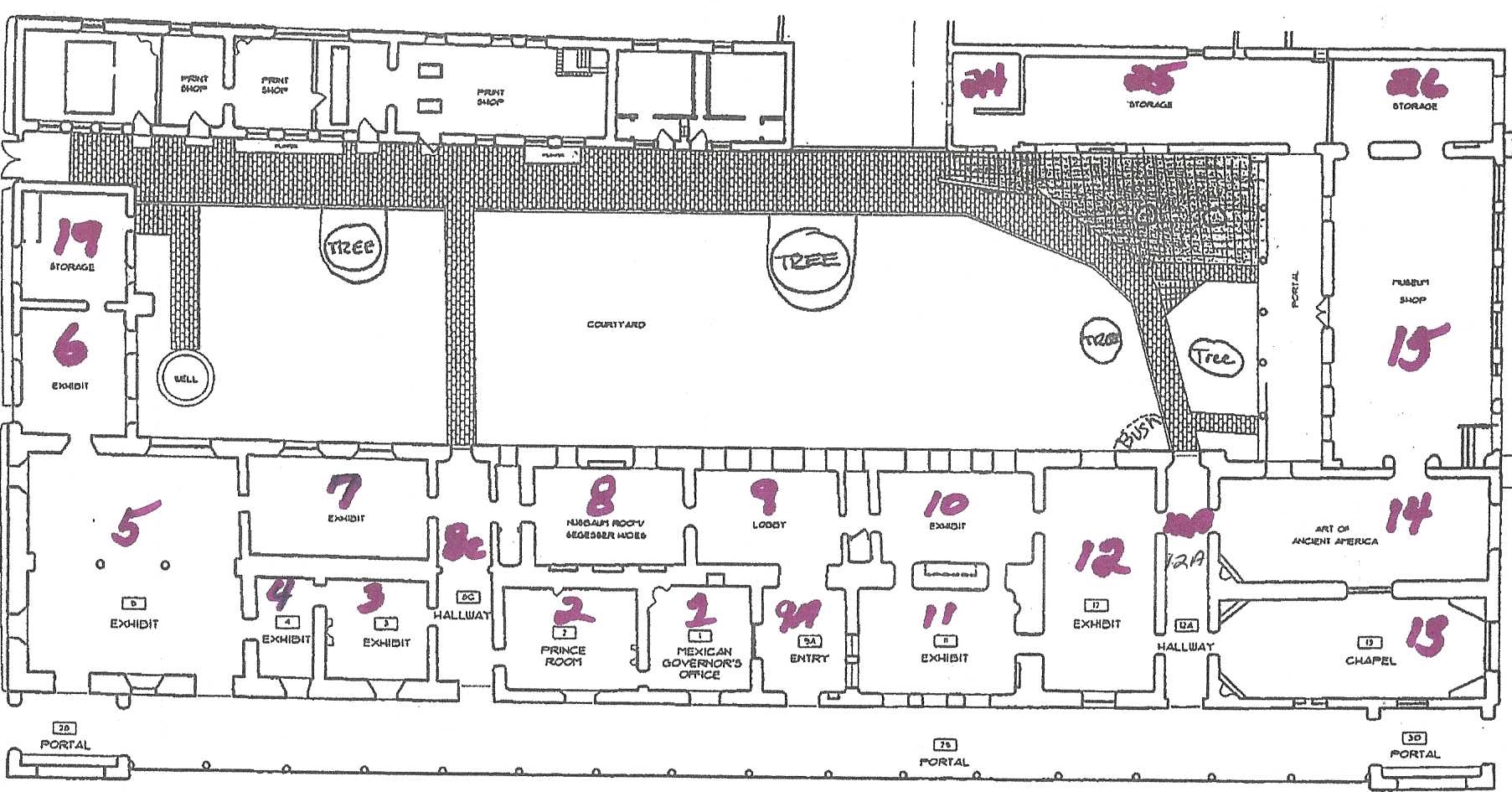
These two rooms are no longer accessible to visitors

Room 6 – Chaco (Acoma) Room
Room 19 - Mimbres-Chihuahua Room
The following description of the rooms in the Palace begin on the east side and continue west
Room 15 – Library
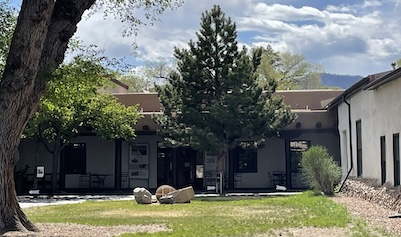
Room 24 – Special Exhibits (Wood House)
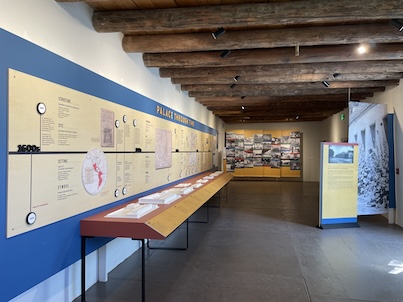
1869 – wood house with privies
Room 26 – Shop Storage (Stable)
Room 14 – Historical Society Room (Legislative Hall/House)
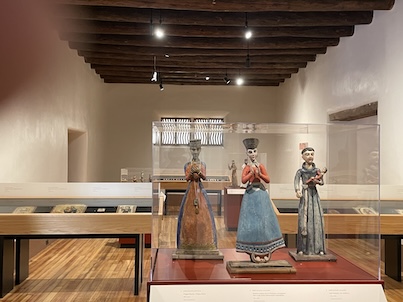
Room 13 –Ecclesiastical Room (Legislative Hall/Council)
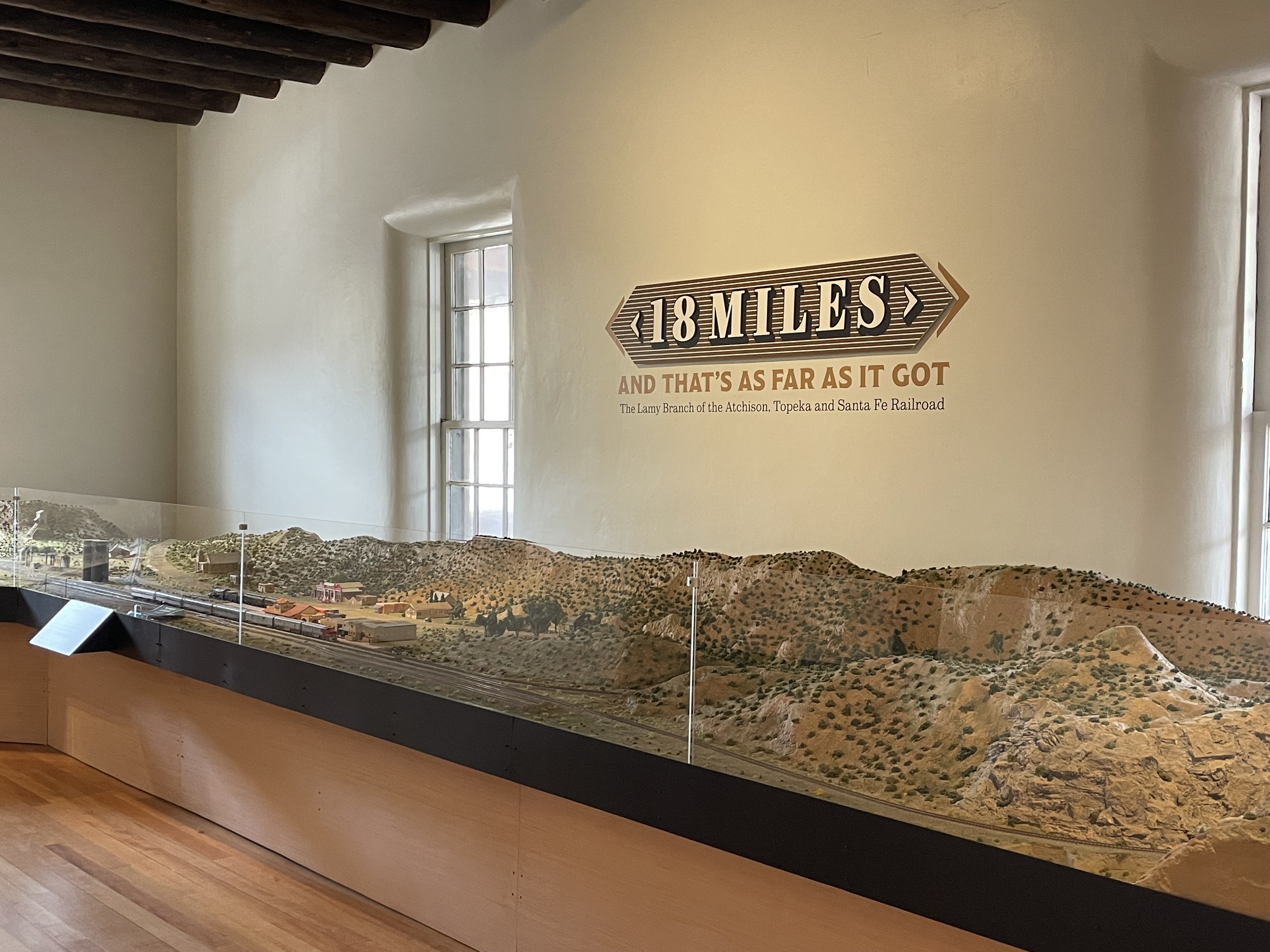
Room 12 - Late Spanish and Mexican Period Rm. (Library)

Room 12A
Room 10 - New Mexico Room (Document Room)
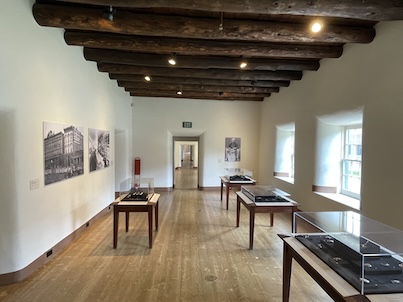
Room 11 – American Territorial/ Manderfield Room (Secretary of State’s Room)

Room 9 – “Pecos Room” (Kitchen)

Room 8 – “Puye Room” (Dining Room)
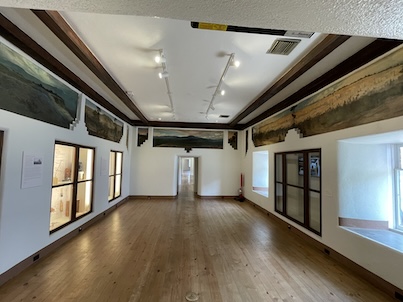
Room 9A- Lobby (Hall)
Room 8C
Room 7 –Rio de los Frijoles Room (Bed Chamber) (“Ben Hur Room”)
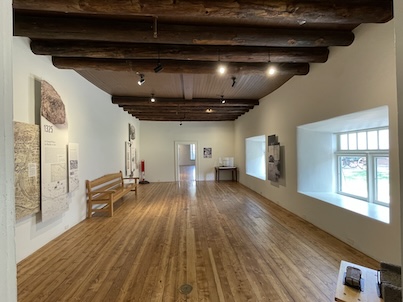
Room 4 – Director’s Office (Bed Chamber)
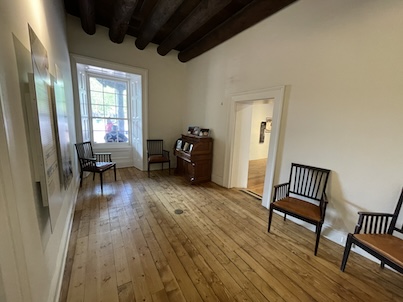
Room 3 – Sitting Room for Gov. L .Bradford Prince (1889-1893)

Room 5- Public Depository
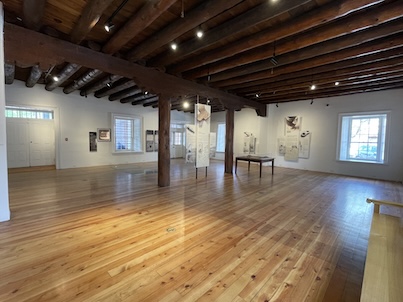
Room 1 – Mexican Governor’s Room
(Gov. Manuel Armijo’s Room)

Room 2 – Parlor for Gov. L.B. Prince

Carl Lotave (Carl Theofil Gustafsson), Feb. 29, 1822 – Dec. 28, 1924 (age 52), Painter of the Puye Room Murals
Carl was an artist remembered for his portraits of Native American subjects. He was born in Sweden and studied art in Stockholm and later in Paris. He immigrated to America to teach art at Bethany College in Lindsborg, Kansas. He then relocated to Colorado Springs, Colorado where he was among the faculty of the Colorado Art School. He was a friend of New Mexico’s governor, Miguel A. Otero (1897-1906).
Edgar Lee Hewett saw his murals in Denver and hired him to paint the murals in the Palace. He actually painted murals for the Rito de los Frijoles (rm. 7) and the entrance hall as well. (All were lost until the 1970’s when canvas rolls were found in storage of the lost Puye Room ones.) In 1910 he completed the murals for the Palace of Governors in Santa Fe as part of the 1909 – 1913 renovation.
The murals represent the early days of New Mexico when the Ancestral Puebloans lived in villages around the state. His Puye Room murals are scenes of both Frijoles Canyon in Bandelier National Monument and the Puye Pueblo on the Santa Clara Pueblo Reservation.
 |
 |
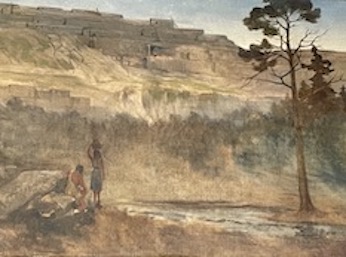 |
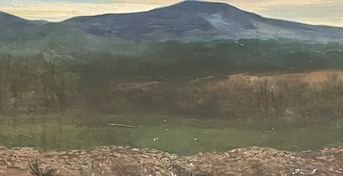 |
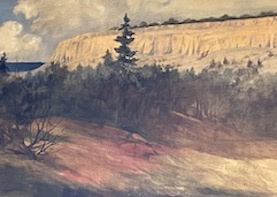 |
 |
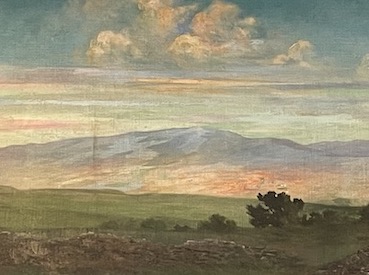 |
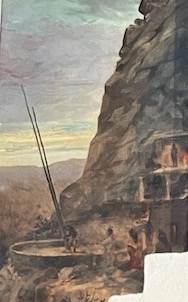 |
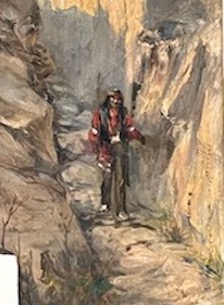 |
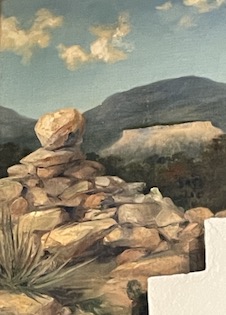 |
